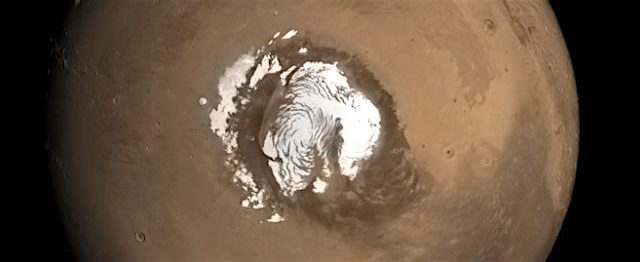One of Mars’s most striking features is the giant dome of layered ice and dust at its northern pole, analogous to Earth’s ice sheets. Scientists have long debated what formed this dome, thought to have begun developing about 5 million years ago, as well as a much older dome at the south pole. In a new study [published in Geophysical Research Letters], researchers have linked the layers within the northern cap to climatic shifts caused by variations in the planet’s orbit.
Since 1972, when the first close-up image of Mars’s polar caps was captured by the Mariner 9 spacecraft, researchers have debated what mechanisms built them. (…)
In recent years, the High Resolution Imaging Science Experiment (HiRISE) on board NASA’s Mars Reconnaissance Orbiter has made it possible to digitally reconstruct those complex layers…. Now, by analyzing the differences in shape, steepness, and brightness of the icy layers exposed in these trough walls of the northern cap, Becerra et al. have found recurring characteristics in the virtual cores that had not been detected before.
By comparing these regular shifts to distinct, periodic alterations in the orbit and rotation angle of Mars as it circles around the Sun, the team now believes they have solid observational evidence that the emplacement of the icy layers was influenced by orbital changes that occur every 50,000 to 120,000 years and cause periodic shifts in the planet’s climate. [More at links]









